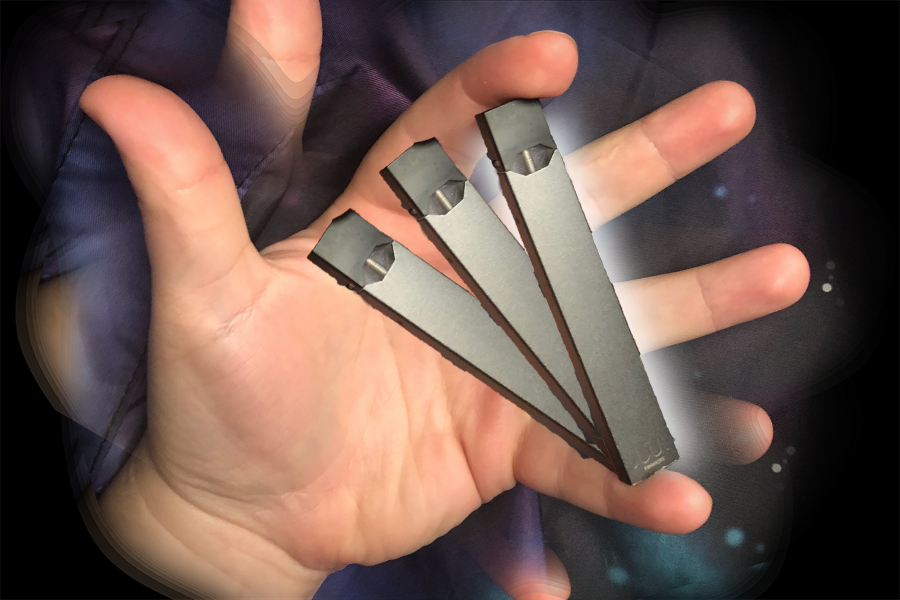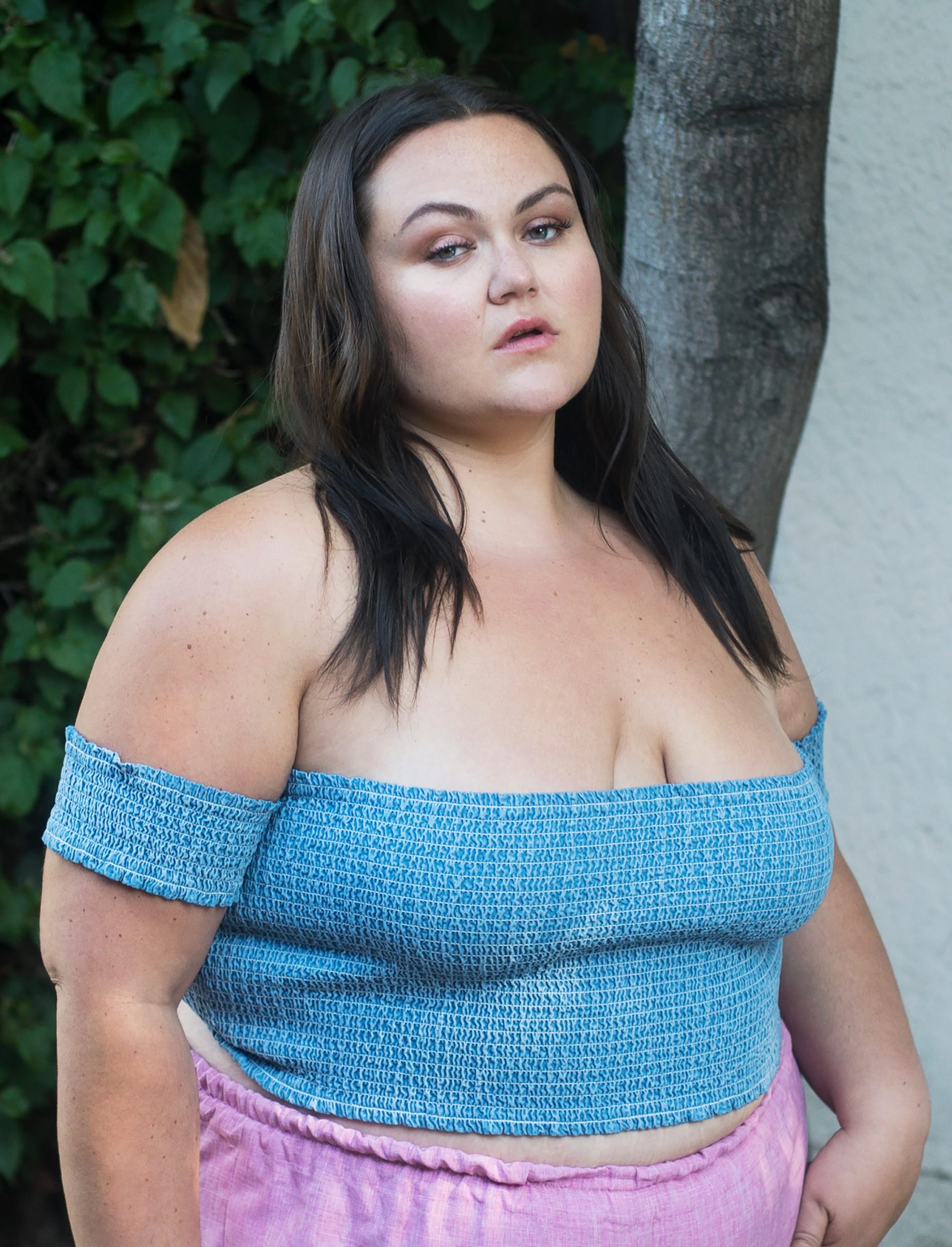I spent last Thanksgiving sitting by a pool, watching the jacuzzi get warm and staring at the Santa Monica Mountains from a picturesque suburban home in the San Fernando Valley. Everyone who wasn’t cooking was doing the same before dinner, drinking and talking at the nearby tables and chaise lounges. In particular, my aunt was explaining to all of us that the champagne and cranberry juice mixtures she was serving were called Poinsettias when the doorbell rang. Two teen girls had arrived to hang out with the two teen boys who lived at the house — one in the middle of high school, the other a freshman in college home for the holidays.
My own teen cousins were friends with these guys, and when the women arrived, all the young people went upstairs to a bedroom. I wasn’t deeply invested in what they were doing, but this bedroom faced the pool — and so, everyone outside could see everything taking place therein. No more than a minute had passed before one of the teens broke out their Juul, and they all began hitting it. The older girl peaked outside and caught our collective, gossipy gaze before hitting the floor.
The parents all seemed to relish in catching them in the act more so than they viewed it as an opportunity for real disciplinary action. Nobody was shocked, even though none of them had seen their kids smoke a cigarette before. They didn’t feel qualified as nicotine addiction counselors, especially when up against a device as innocuous (and tasty) as the Juul, which half of them didn’t even understand. “What is that thing they’re sucking on?” my 61-year-old mom asked me excitedly, which meant she thought it was a weed device she could possibly borrow from them later.
Juuls are the vice du jour. And while these nicotine vapes may look like innocuous USBs, they’re controversial among adults and teens alike (especially controversial among the adults scandalized that their honor student teen is using the devices to inhale nicotine, one of the world’s most addicting substances, instead of store files). “As a mother, I hate the fuck out of them!” my aunt, the mother of one of the aforementioned teens, tells me. “They directly target kids, and mine bought right into it. I think he thought they were better for him than cigarettes, and of course, they’re easier to hide.”
But should she “hate the fuck out of them”? Because isn’t my cousin kinda right — aren’t they at least better than smoking a traditional cigarette? And if that’s the case, should anyone who isn’t gonna stop smoking consider switching to a Juul? That is, should this be more than a teen craze and become a thing with the geriatric set, too? Or is this just smart packaging/marketing that leads you down the same horrific, tar-filled path of emphysema and/or lung cancer as cigarettes? Plus, aren’t they capable of burning a hole in your lung before they riddle them with tumors?
To wrap even my twentysomething brain around Juuls (and the questions above), I embarked upon a little research…
First things first, are Juuls healthier than cigarettes?
Yes. As my colleague Ian Lecklitner reported back in April:
“It’s very safe to say that e-cigarettes contain fewer cancer-causing chemicals than combustible cigarettes, but there are some oxidative gases (which contribute to cardiovascular disease, chronic bronchitis and emphysema) in e-cigarettes that we need to take a closer look at,” says Gary Giovino, an internationally renowned authority on tobacco and nicotine as well as professor and chair of community health and health behavior at the University of Buffalo School of Public Health and Health Professions. “But if I were to decide whether to smoke a Marlboro or an e-cigarette, I would vape an e-cigarette.”
Similarly, the first study to estimate the effects on public health if cigarette smoking was replaced by e-cigarettes determined that making the switch could have a positive outcome if maintained for at least a decade. The research came out of Georgetown University, and this is how its authors described the study’s predictions:
“Up to 6.6 million cigarette smokers will live substantially longer if cigarette smoking is replaced by vaping over a 10-year period, calculates a research team led by investigators from Georgetown Lombardi Comprehensive Cancer Center. In all, cigarette smokers who switch to e-cigarettes could live 86.7 million more years with policies that encourage cigarette smokers to switch completely to e-cigarettes.”
If that’s not enough, according to Dr. Steven Schroeder and the New York Times, “Some studies have estimated that e-cigarettes confer at least a two-thirds reduction in health risks, compared with smoking. Nicotine, Dr. Schroeder pointed out, isn’t the primary culprit in the long list of smoking-related diseases. It’s the addictive ingredient that keeps smokers lighting up, but the thousands of other chemicals in combustible cigarettes, among them 70 known carcinogens, do most of the damage.”
What, though, of this ‘popcorn lung’ I’ve heard so much about? Is that an inevitability if I vape a crème-brûlée-flavored Juul?
No, but the thinking behind that isn’t far fetched. What we commonly refer to as popcorn lung is an inflammatory respiratory condition medically known as bronchiolitis obliterans. It’s called popcorn lung because the condition was first discovered among sick people working at a popcorn factory. Symptoms include shortness of breath, wheezing and bluish skin (because of how seriously it lacks oxygen), and in the case of the popcorn factory, it was discovered that diacetyl, the chemical responsible for their product’s buttery taste, was the culprit. (Diacetyl is also what makes margarine taste like butter.)
Diacetyl is found in tons of e-vape liquids. (Admittedly, it’s also been found in cigarette smoke.) A study designed to test the effect of inhaling e-cigarette vapors on human embryos (by testing on tadpoles) found that tadpoles exposed to sweeter flavors of vape juice were more likely to develop a cleft-lip like transmutation than tadpoles exposed to other flavors like tobacco and menthol. More specifically, this cellular defect was most common among berry and cream flavors of vape (which often get layered to create more complex, dessert-like flavor profiles).
This is why people think puffing on the crème-brûlée Juul flavor is more dangerous than other Juul flavors, at least in terms of respiratory issues. In fairness, diacetyl hasn’t been found in any Juul products or vapors. That said, vape juices (and Juul imposter pods) range in ingredients and toxicity — and often fail to report all of their ingredients. So you’re risking exposure to diacetyl any time you use knock-off brands. For example, one Harvard University study detected diacetyl in 75 percent of the e-liquids it tested. And while diacetyl is certifiably safe to eat, the Centers for Disease Control warns that doesn’t necessarily make it safe to inhale:
“Even if they are safe to eat, these ingredients [flavorings] might still be harmful to breathe in the forms and amounts to which food and chemical industry workers may be exposed. Given the complexity of flavorings mixtures, and the lack of health data for many of the component materials, identifying the relative contributions of individual substances to causing flavoring-induced lung disease is a difficult challenge.”
So… it’s a good thing that teens are Juuling as opposed to “smoking”?
Not exactly. As Jia Tolentino details in her New Yorker piece, “The Promise of Vaping and the Rise of Juul,” Juul’s founders intended for the company to be a fantastic substitute for adult smokers, a breakthrough that would reduce harm among nicotine addicts. But basically, the better Juul sold itself as a cigarette replacement, the better it marketed itself to teens (even young people who had never tried a cigarette before, meaning Juuls are carving out a new demographic of nicotine addicts).
Sure, nicotine isn’t the active ingredient in cigarettes that causes lung cancer, but that doesn’t make it harmless. As noted in the abstract of “Harmful Effects of Nicotine,” a peer-reviewed study from the Indian Journal of Medical and Paediatric Oncology:
“Nicotine poses several health hazards. There is an increased risk of cardiovascular, respiratory, gastrointestinal disorders. There is decreased immune response, and it also poses ill impacts on the reproductive health. It affects the cell proliferation, oxidative stress, apoptosis, DNA mutation by various mechanisms which leads to cancer. It also affects the tumor proliferation and metastasis and causes resistance to chemo and radio therapeutic agents.”
While humans have smoked tobacco for most of documented history, “the only other known use of nicotine has been as an insecticide since 17th century.” If it kills bugs, you probably don’t want your kids to inhale it, no matter how smokeless it is.
It’s the opposite then — the Olds are the ones who should be sneaking Juuls into family gatherings at Thanksgiving?
It’s at least trendy with them. They even talk about Juuling on the AARP website. And per a 2017 New York Times story entitled “Some Older Smokers Turn to Vaping. That May Not Be a Bad Idea”:
Jeannie Cox currently enjoys a flavor called Coffee & Cream when she vapes. She’s also fond of White Lotus, which tastes “kind of fruity.” She buys those nicotine-containing liquids, along with her other e-cigarette supplies, at Mountain Oak Vapors in Chattanooga, Tenn., where she lives. A retired secretary in her 70s, she’s often the oldest customer in the shop.
Not that she cares. What matters is that after ignoring decades of doctors’ warnings and smoking two packs a day, she hasn’t lit up a conventional cigarette in four years and four months. “Not one cigarette,” she said. “Vaping took its place.”
To put this trend to the test, I seek out my dad. He’s smoked a pack of Marlboro Light 100s or so everyday for roughly the last 30 years. Getting straight to the point, I ask him if he’d ever quit the Marlboro Light 100s and switch to a Juul. He ignores me before mumbling, “Nah.” I explain to him what it is — basically, everything I’ve recounted above — and he continues to repeat, “Nah.” I ask him why, and he answers, “I don’t know” in a British accent. I explain to him that he’s part of the potential consumer base that could actually be helped by Juul.
He merely deflects, though his deflection ends up saying it all: “I’ve heard they’ve got flavors kids go crazy for, though.”

